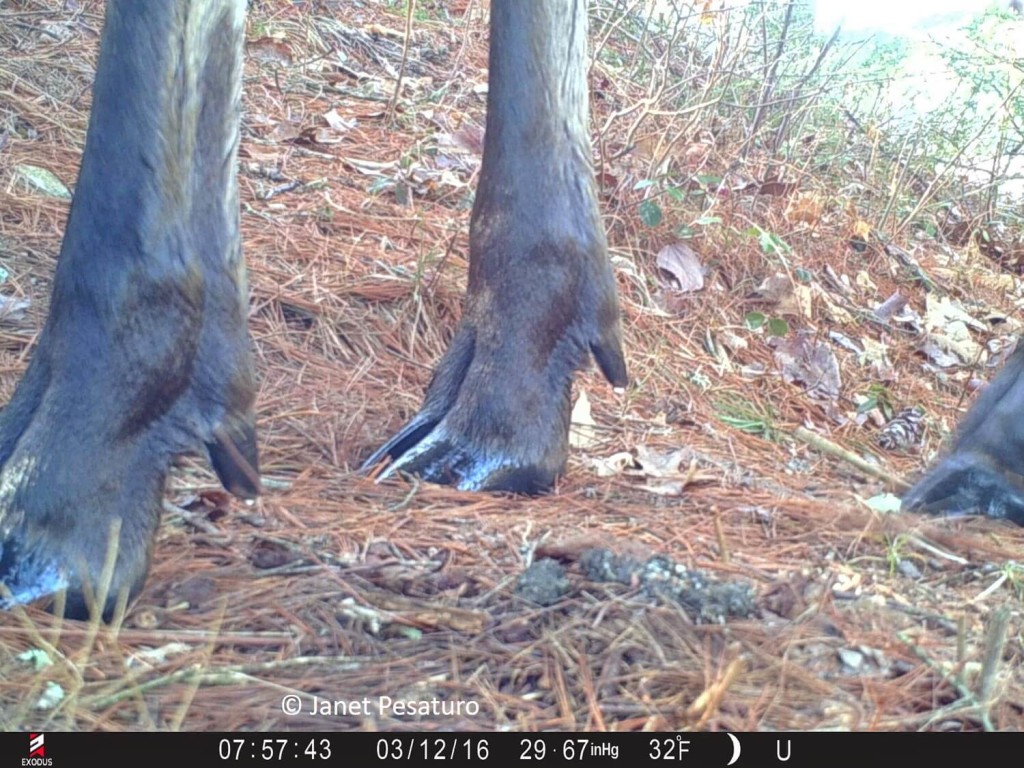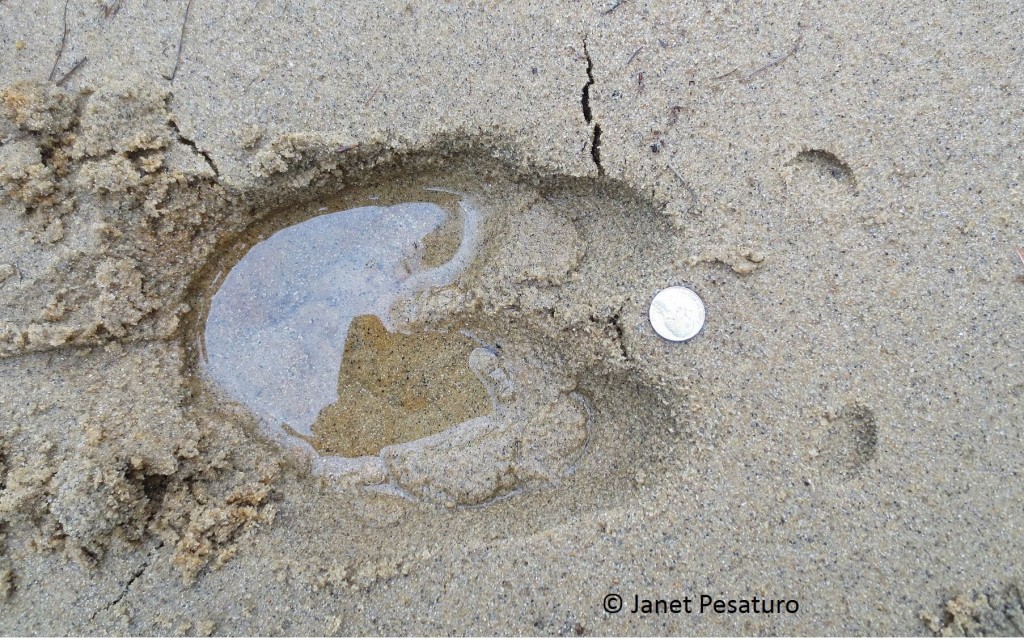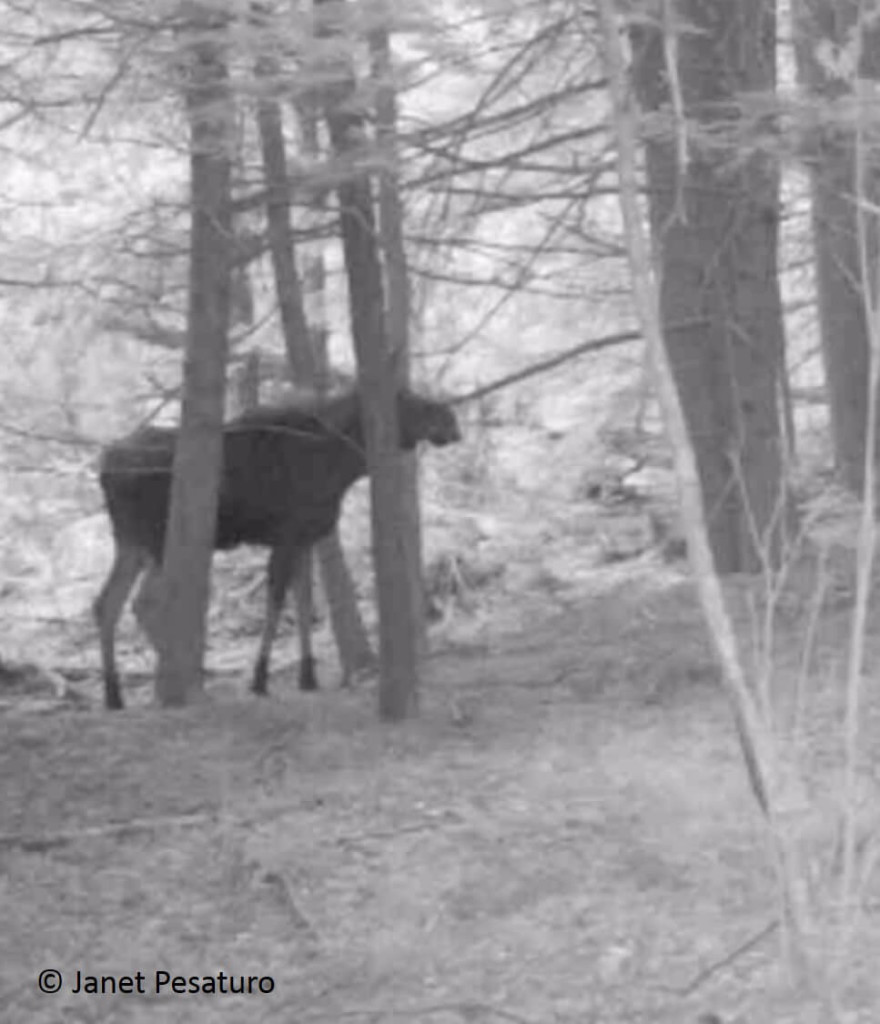Moose Hooves and Legs: Great Adaptations
You never know what you’re going to get with your trail camera. I set one low to the ground at an otter rolling site, hoping to get nice photos of a big, wet weasel, and it just so happened that a moose came by. So there you are, a nice closeup of shiny hooves, stubby dew claws, and hairy legs. Honestly, what struck me about those feet is their curious resemblance women’s shiny pumps with high heels…But we’ll lay that aside for now. What I really want to focus on is how the structure of moose hooves and legs benefits the animal.

Trail camera photo of moose feet. Note the cloven hoof and substantial dew claws.
Moose Hooves and Legs
Moose are a northern species. They range from the northern US up through Canada and Alaska, where they spend many months walking in snow. In deep, soft substrate like snow or mud, the dewclaws touch the ground and the split hoof can splay. This increases the surface area of the foot supporting the moose’s weight and, like snowshoes, help prevent the animal from sinking. Hooves can also scrape away snow to reveal food on the ground. In spring and summer, when moose take to the wetlands in search of succulent aquatic vegetation, hooves function as paddles for strong swimming. The phrase “good swimmer” might not come to mind when you consider a moose’s body type, but, according to some sources, they can swim up to 6 miles per hour.

Moose tracks in sand. Hoof is not splayed and dew claws are just barely making contact with the ground. In softer substrate, hooves splay and dew claws become weight bearing, increasing the surface area supporting the animal’s weight, thus minimizing sinkage.
One of the most striking features of the moose’s physique is its long legs. They, too, are well adapted to the moose’s seasonal activities. In winter, long legs allow the animal to walk efficiently through deep snow, and to reach higher into the trees for choice browse. In summer, long legs allow it to wade into ponds and lakes.

Screen shot of a moose from a trail camera video. It’s long legs give it a striking appearance.
For an interesting comparison, have a look at caribou feet. Compared to moose hooves, the caribou hoof is rounder and the dewclaws larger, providing an even greater snowshoe affect. In fact, the caribou’s foot is twice as effective in deep snow as the moose’s foot: The caribou’s body weight per unit area of its foot print, is only half that of the moose’s.
Source:
Cannings, R. et al. 2015 British Columbia: A Natural History of Its Origins, Ecology, and Diversity. 3rd Edition. Greystone Books, Vancouver/Berkeley

How big are their feet?
I don’t recall the dimensions of the hoof offhand, but the photo of a moose track has a nickel in it for scale so you can get an idea of the track size. The diameter of a nickel is about 0.84 inches. Obviously calf feet are much smaller.
The dewclaws in the front legs are attachatached to a special bone , that when dried ,is a great tool for opening letters . Moose are the only animals with this bone about 6.5 inches long
Very interesting; thanks.